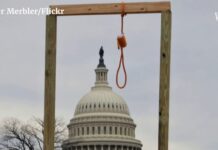Artificial Intelligence, quant investing, and big data all contribute to generating above-index returns, but it looks like good, old-fashioned witchcraft also plays a role in some investing circles. Even more surprising, this “cosmology of investing” has things to teach Western investing professionals.
The 2008 stock market crash was a global event, and its impact in West Africa affected local equity markets and caused commodity price swings that wiped out many wealthy local businesspeople. These severe losses unnerved the confidence of some wealthy local businesspeople in the global and Ghana capital markets.
To fill this confidence void, some locals turned to the help of local “fetish priests” who, as part of African traditional religion, were called upon to provide financial forecasts for local Ghanaian mutual funds and commodity prices.
But the role of these “juju men” contrasts traditional West African communal values against the “evil” or “blood” money from speculation. Profits from these speculative transactions are criticized by local Akan religious people as selfish since it is money that “does not travel” outside of the people who made it from speculation to the wider community. Female witches (obayifo) assist in the accumulation of this speculative money, and they are accused of practicing a form of “economic cannibalism.”
As discussed in the 2018 paper, The Cosmology of Economy: West African Witchcraft, Finance and the Futures Market, in the journal Culture and Religion (19:1, pp. 113-126), the presence of witchcraft within a financial regime is symbolic of the enemy ‘within,’ and also of the clash between ‘familiarity’ and ‘uncertainty’ as the witch highlights the volatility of the market and the emotional insecurity and resentments cultivated among its users.”
To believers, these witches have a tangible impact on investing and are said to occupy positions as derivatives, futures, MBS, and foreign exchange traders in New York and London. One man in contact with a witch said the information and theories were very sophisticated.
“Witches had been tracking the illegal activities of bankers and other fraudulent traders for years and even transmuting into their bodies. Moreover, like many investment banks, such as Morgan Stanley and JP Morgan, who hoarded millions of barrels of oil along with the ownership of distillation sites and retail facilities, many witches were believed by priests to be engaged in slicing, dicing, and reconfiguring risk, driving up the price of oil when demand was falling and persuading large pension funds to invest in oil futures.”

These prominent positions exceeded the physical inventory of oil, and the market collapsed. The priest spoke of “supernatural futures intervention” and of a witch who “plays with [interest] rates all night while she cooks.” One priest said his god had x-ray eyes that could see the “resentful anger of witches” anywhere in the world, including the Georgetown or Du Pont Circle neighborhoods in Washington, D.C.
After the 2008 crash, the power of the witches vanished along with the “contaminated money.” However, there was still a need for “ritual order” to protect investors against the “unpredictability of derivatives.” This is why West African priests in Frankfurt, Germany, spilled salt in the streets, touched the fenders of cars, or counted to ten before entering a subway. In New York, witches left Wall Street along a route that used the city’s main north-south street grid system.
Stranger Than Fiction
To investors and anyone who reports on the economy and financial markets, this has to be one of the strangest stories ever, yet what some people believe is not fiction. The author of this “cosmoeconomic” study says the Akan priests “engaged in a reflexive discourse with Wall Street as the obscuring of intimacy and family within global financial markets has enabled the witches to extract unseen billions of dollars alongside the covert practices of more renowned entrepreneurs and businesses who, to coin the expression, ‘got away with it.’”
But this story of West African witchcraft practices appears to be accurate. It can be explained as a way that society, many of whose locals trade yams and cocoa, view the abstraction of credit in global investing, the cash gains from speculation that do not benefit the local economy, and money’s “mysterious moral properties.”
When you “mix global witchcraft discourses with the rampant social and economic inequalities created by global financial institutions, a hotbed of panic and anxiety will be apparent.”
It is worth remembering that the cause of the 1987 Crash, which saw the S&P 500 stock index fall by 23% and sent a shock wave that rippled throughout the international financial services community for two years, was never resolved. Despite the severity, traders and researchers have never agreed on a single reason for this statistically improbable event. It was such a rare event that Mark Rubinstein, Professor of Applied Investment Analysis at the University of California at Berkeley, estimated this 1987 stock market event would only occur once in 20 billion years.
Even more surprising is that Congressional and independent investigators produced no less than 77 separate studies, most chaired by Wall Street’s most prominent firms after the Crash.
So maybe the witches of West Africa are worth listening to.











